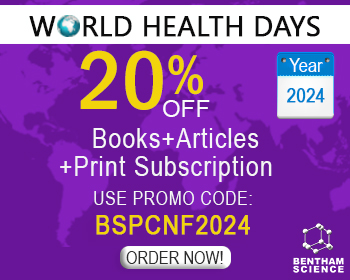Abstract
Background: The increasing interests on the healing properties of medicinal plants have led to a paradigm shift from the use of synthetic drug to the search of natural medicines for the treatment and management of several diseases. Like other phenolics flavonoids have been continuously explored for their medicinal benefits, with their potent antioxidant activity being a major interest. Kolaviron (KVN) is a biflavonoid isolated from Garcinia kola Heckel, which has been reported for its potent antioxidant and anti-inflammatory properties. These properties have been explored in several disease models including reproductive toxicity, cardiotoxicity, diabetes mellitus, gastrotoxicity and hepatotoxicity.
Objectives: The present study was aimed to review the reported medicinal properties of KVN in order to provide some guidelines and direction to researchers on KVN research.
Methods: A literature search was conducted with the aim of identifying peer-reviewed published data on KVN and their biological activities. Different academic and/or scientific search engines were utilized including but not limited to Google Scholar, PubMed, ScienceDirect and so on.
Results: Among all the studied disease models obtained from the literatures, the effect of KVN on reproductive toxicity was the most studied as it represented 25% of all the studies, followed by neuroprotective, cardioprotective and hepatoprotective activities of Kolaviron. From our identified studies, KVN has been shown to have antidiabetic, cardioprotective, neuroprotective, hematoprotective, nephroprotective, gastroprotective, hepatoprotective activities. KVN also has effects on malaria and reproductive health, which can be explored for novel drug and nutraceutical developments for related ailments. Unfortunately, while toxicity data are lacking, most studies are limited to in vitro and/or in vivo models, which may impede translation in this area of research.
Conclusion: Based on data gathered from the literature search, it is evident that KVN possesses numerous health benefits, which can be attributed to its potent antioxidant and anti-inflammatory activities. However, more studies are required in this area of research to validate the medicinal value of kolaviron, which may positively influence the economic value of plant, Garcinia kola.
Keywords: Garcinia kola, kolaviron, reproductive, neuroprotective, cardioprotective, hepatoprotective.
[http://dx.doi.org/10.1055/s-0033-1360335] [PMID: 24535720]
[http://dx.doi.org/10.1016/B978-0-12-813006-3.00006-4]
[http://dx.doi.org/10.1016/j.jep.2019.02.024] [PMID: 30769039]
[http://dx.doi.org/10.1080/07352680600671661]
[http://dx.doi.org/10.1016/j.mrfmmm.2005.03.023] [PMID: 16126236]
[http://dx.doi.org/10.1039/b802662a] [PMID: 19636448]
[http://dx.doi.org/10.4161/oxim.2.5.9498] [PMID: 20716914]
[http://dx.doi.org/10.7763/IJCEA.2014.V5.416]
[http://dx.doi.org/10.1111/j.1753-4887.1998.tb01670.x] [PMID: 9838798]
[http://dx.doi.org/10.1016/B978-0-12-461011-8.50007-X]
[http://dx.doi.org/10.3390/molecules14062202]
[http://dx.doi.org/10.1080/10408398.2011.561379] [PMID: 23768145]
[http://dx.doi.org/10.1007/978-0-387-28822-2_1]
[http://dx.doi.org/10.1111/1541-4337.12204]
[http://dx.doi.org/10.2174/138955708786369564] [PMID: 18991758]
[http://dx.doi.org/10.1016/S0163-7258(02)00298-X] [PMID: 12453566]
[http://dx.doi.org/10.4314/njps.v24i1.46381] [PMID: 19826464]
[http://dx.doi.org/10.1016/B978-0-12-800018-2.00018-2]
[http://dx.doi.org/10.1016/B978-0-12-800018-2.00015-7]
[http://dx.doi.org/10.1007/s11101-011-9207-3]
[http://dx.doi.org/10.4103/0974-8490.99071] [PMID: 22923949]
[http://dx.doi.org/10.2174/1389557517666161104130026] [PMID: 27823559]
[http://dx.doi.org/10.5214/ans.0972.7531.200203] [PMID: 25206011]
[http://dx.doi.org/10.4103/0974-8490.157978] [PMID: 26130939]
[PMID: 16810145]
[http://dx.doi.org/10.1080/01480545.2020.1716783] [PMID: 31994415]
[http://dx.doi.org/10.1002/jbt.10058] [PMID: 12616644]
[http://dx.doi.org/10.1016/j.jep.2020.112744] [PMID: 32165174]
[PMID: 23515095]
[http://dx.doi.org/10.1186/1472-6882-13-363] [PMID: 24359406]
[http://dx.doi.org/10.1186/s12906-015-0760-y] [PMID: 26179065]
[http://dx.doi.org/10.1136/heart.89.suppl_2.ii2] [PMID: 12695425]
[http://dx.doi.org/10.1111/j.1745-7254.2005.00146.x] [PMID: 16038622]
[http://dx.doi.org/10.2174/1381612825666190925163827] [PMID: 31553287]
[http://dx.doi.org/10.1016/j.jep.2019.112358] [PMID: 31676404]
[http://dx.doi.org/10.1016/j.biopha.2018.10.044] [PMID: 30399581]
[http://dx.doi.org/10.1016/B978-0-12-416595-3.00008-6]
[http://dx.doi.org/10.1111/j.1742-7843.2005.pto960112.x] [PMID: 15667600]
[http://dx.doi.org/10.1540/jsmr.45.39] [PMID: 19377272]
[http://dx.doi.org/10.1515/jbcpp-2013-0139] [PMID: 24620014]
[http://dx.doi.org/10.22506/ti/2016/v23/i3/146718]
[http://dx.doi.org/10.4103/0974-8490.178647] [PMID: 27114693]
[http://dx.doi.org/10.1515/jcim-2016-0168] [PMID: 28972943]
[http://dx.doi.org/10.1177/2156587218757649] [PMID: 29468886]
[http://dx.doi.org/10.3390/molecules20034655] [PMID: 25781069]
[http://dx.doi.org/10.1007/s12017-008-8052-z] [PMID: 19191039]
[http://dx.doi.org/10.1248/bpb.33.260] [PMID: 20118550]
[http://dx.doi.org/10.3109/10715762.2011.593177] [PMID: 21726175]
[http://dx.doi.org/10.1016/j.tiv.2011.02.005] [PMID: 21333729]
[http://dx.doi.org/10.3889/MJMS.1857-5773.2011.0203]
[http://dx.doi.org/10.3109/15376516.2014.913752] [PMID: 24712692]
[http://dx.doi.org/10.1016/j.pathophys.2018.04.004] [PMID: 29730092]
[http://dx.doi.org/10.1016/S1471-4922(01)02031-1] [PMID: 11756044]
[http://dx.doi.org/10.1172/JCI33996] [PMID: 18382739]
[http://dx.doi.org/10.1016/j.actatropica.2005.04.015] [PMID: 15893289]
[http://dx.doi.org/10.1055/s-2007-967167] [PMID: 17566148]
[http://dx.doi.org/10.1021/np100737q] [PMID: 21155593]
[http://dx.doi.org/10.1016/S1995-7645(14)60003-1] [PMID: 24461521]
[http://dx.doi.org/10.1016/j.jep.2015.06.038] [PMID: 26129936]
[http://dx.doi.org/10.3109/13880209.2015.1087035] [PMID: 26971618]
[http://dx.doi.org/10.1007/s12012-018-9446-2] [PMID: 29383632]
[http://dx.doi.org/10.1023/A:1026488823157] [PMID: 11092248]
[http://dx.doi.org/10.1023/B:CBTO.0000027916.61347.bc] [PMID: 15242183]
[http://dx.doi.org/10.1016/j.jiph.2017.05.006] [PMID: 28619504]
[http://dx.doi.org/10.1093/toxsci/kfy159] [PMID: 29939355]
[http://dx.doi.org/10.1016/j.mce.2016.06.029] [PMID: 27378149]
[http://dx.doi.org/10.1155/2012/957235]
[http://dx.doi.org/10.1016/j.fct.2017.06.010] [PMID: 28595958]
[http://dx.doi.org/10.1016/j.cofs.2016.02.002]
[http://dx.doi.org/10.3923/pjbs.2009.1146.1151] [PMID: 19899326]
[http://dx.doi.org/10.1002/cbf.2968] [PMID: 23494475]
[http://dx.doi.org/10.1016/j.phymed.2014.09.006] [PMID: 25481391]
[http://dx.doi.org/10.3109/00365529109098226] [PMID: 1775926]
[http://dx.doi.org/10.3164/jcbn.10-79] [PMID: 21373261]
[http://dx.doi.org/10.1016/j.jep.2016.02.049] [PMID: 26956376]
[http://dx.doi.org/10.1021/jf070719r] [PMID: 17725316]
[http://dx.doi.org/10.1111/bcpt.12050] [PMID: 23336970]
[http://dx.doi.org/10.1002/ptr.1793] [PMID: 16397915]
[http://dx.doi.org/10.1139/apnm-2017-0138] [PMID: 28841395]
[http://dx.doi.org/10.1016/j.bjbas.2016.03.004]
[http://dx.doi.org/10.1007/s00580-012-1675-3]
[http://dx.doi.org/10.1006/phrs.1999.0648] [PMID: 10860638]
[http://dx.doi.org/10.1016/S0278-6915(00)00039-9] [PMID: 10828505]
[http://dx.doi.org/10.1016/j.lfs.2008.11.012] [PMID: 19081081]
[http://dx.doi.org/10.1089/jmf.2008.0138] [PMID: 19627207]
[http://dx.doi.org/10.1016/j.pathophys.2017.07.003] [PMID: 28822616]
[http://dx.doi.org/10.1177/019262338901700213] [PMID: 2675287]
[http://dx.doi.org/10.1016/S0048-9697(98)00328-3] [PMID: 10028699]
[http://dx.doi.org/10.1111/jfbc.12764] [PMID: 31353550]
[http://dx.doi.org/10.1186/1472-6882-14-164] [PMID: 24884677]
[http://dx.doi.org/10.1111/j.1742-7843.2007.00005.x] [PMID: 17214610]
[http://dx.doi.org/10.1016/j.etp.2010.10.002] [PMID: 21036568]
[PMID: 23955400]
[http://dx.doi.org/10.1177/1091581812445476] [PMID: 22674924]
[http://dx.doi.org/10.1111/j.1439-0272.2012.01279.x] [PMID: 22356231]
[http://dx.doi.org/10.3109/15376516.2013.843107] [PMID: 24024662]
[http://dx.doi.org/10.1016/j.etap.2013.01.010] [PMID: 23474402]
[http://dx.doi.org/10.1111/and.12095] [PMID: 23581499]
[http://dx.doi.org/10.1515/jbcpp-2015-0063] [PMID: 27089414]


























